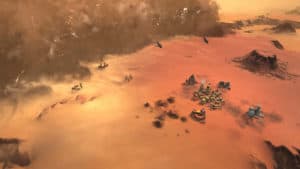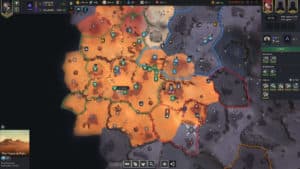Dune Spice Wars preview: RTS blends with 4X on Arrakis
We preview Dune Spice Wars as it heads into Early Access.
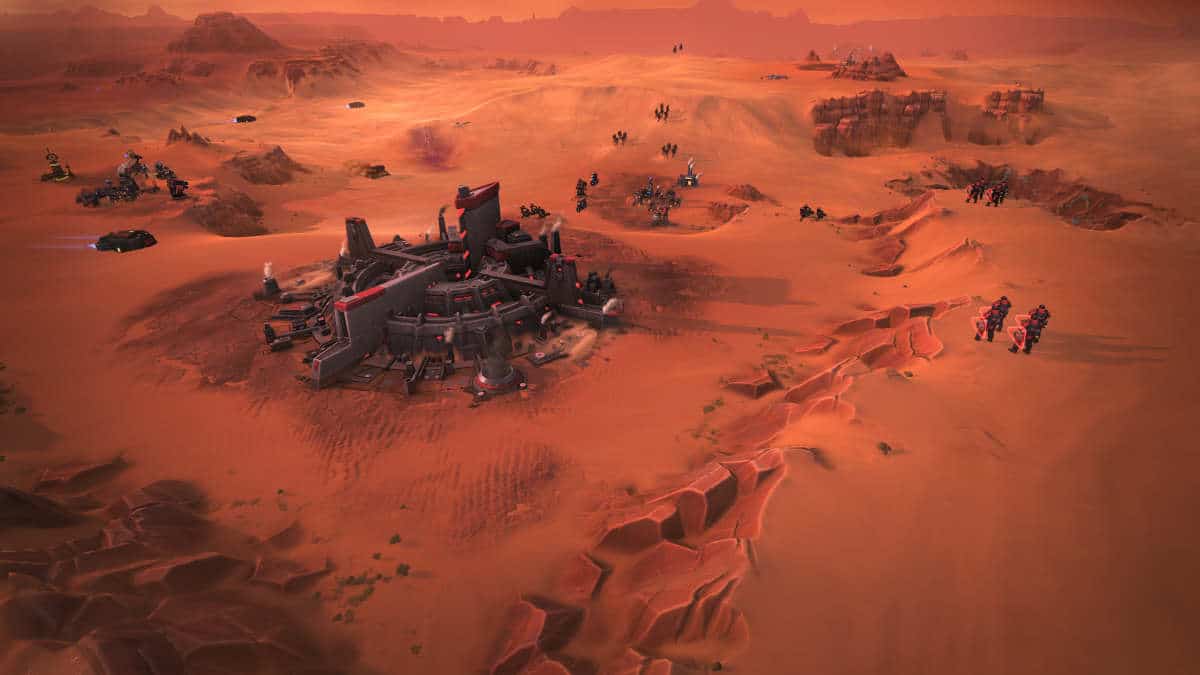
WePC is reader-supported. When you buy through links on our site, we may earn an affiliate commission. Prices subject to change. Learn more
Dune Spice Wars is the first Dune game to launch in over 20 years, paying respect to the genre it spawned many moons ago. Only this time, the RTS genre has developed greatly, and what better way to make a return than with a blend of RTS and 4X gameplay.
The developer studio, Shiro Games, responsible for the hit RTS Northgard, is behind the new game. The devs are using the formulae that brought them success with Northgard, except bringing it to Arrakis. Anyone looking to get in on Dune Spice Wars’ early access or future launch should know what to expect.
Dune Spice Wars Preview: 4X strategy with RTS gameplay
As with 4X games, your job is to manage your units, cities, buildings and more to give you the best possible advantages out there. Immediately on starting a game, you can zoom out you get a region mode. Here are the territories you want to conquer. As you get deeper into the game you can see the resources that the region possesses, along with the color of the faction that owns it. It’s that classic Paradox 4X vibe. Take note of these regions, as this is the expansion 4X strategy feature, detailing all the different areas you want to expand for that desirable 4X grand strategy that will bring you victory.
Unlike other Grand strategy games though, Dune uses a feature called spice. The main objective of the game is to collect spice, just like the factions on Arrakis in Frank Herbert’s Dune series or in the film adaptations. Every faction will need to collect it to keep the space emperor happy. Failing to do so means you get punished, and eventually, things will start to fall apart as the God-Emperor is furious at your tax resistance.
It brings a depth of strategy to the map. Only certain regions can provide spice, so expect to colonise areas, conquer villages, and protect your spice trade against warring factions or mischievous rebels. One other thing to note is that the tax requirement scales the later in the game you get, meaning there is more and more pressure to get more spice. It offers those who enjoy military conquest something to focus on. You can use it to starve an enemy faction out and watch them crumble against the might of the space emperor’s penalties, or just control the entire spice trade yourself and reap that sweet cash and paid tax bill.
Like all 4X games, there is a condition to win the game; in Dune Spice Wars, that is hegemony. The hegemony system is a meta score that all factions contribute towards. You can get hegemony through many ways, such as paying your taxes, claiming villages, trading, getting CHOAM shares, or playing diplomat on the Landsraad screen (the democracy screen where the factions vote on random edicts, debuffs and buffs). This helps you specialize your playstyle and adds to the fact that everything you do helps you edge closer to victory. It means that military, expansion, diplomacy, economic and scientific gameplay focus all have an impact, rather than specializing in one win condition.
4X management
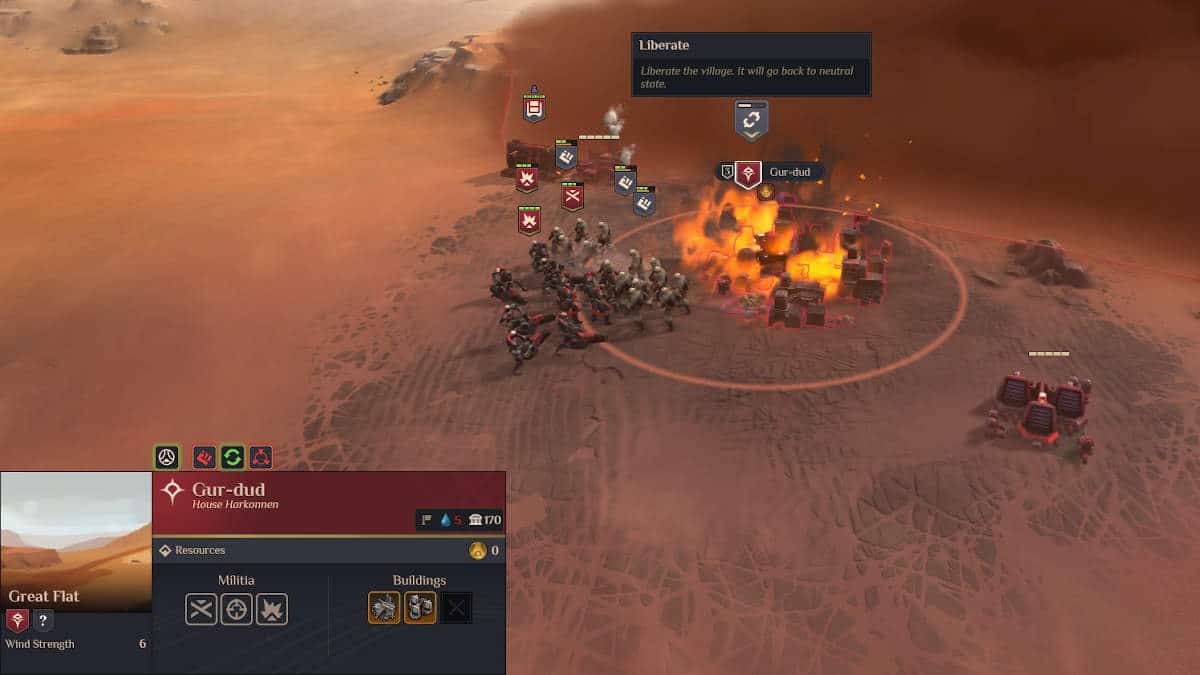
There are plenty of 4X aspects in the game. The diplomacy screen feels like a Civilization game. You click a faction, and then a conversation. You can then find an agreement of technology, or trade resources using a weighted bartering system. You can even get random vignettes of faction leaders admiring or hating you.
There are also plenty of resources to manage. Throughout the desert planet, you will find a severe lack of water. You need to find zones with strong winds that you can collect water from, to help supply your faction with water. Water is important, as that helps to create bigger armies and support more villages, helping you keep your faction afloat.
In addition, you want to keep an eye on special resources. Most regions in the game have a special resource you can collect. Some help your Fuel Cells, a strategic resource you spend on buildings and units. Perhaps another zone helps you with Plascrete, the resource you need to build and maintain units. Others help you generate Solari (money), which you spend on units and various forms of maintenances. Sometimes you’ll find yourself in plenty of supply to use your trading advantages, while you may find yourself short if you have gone on a building campaign.
RTS aspects
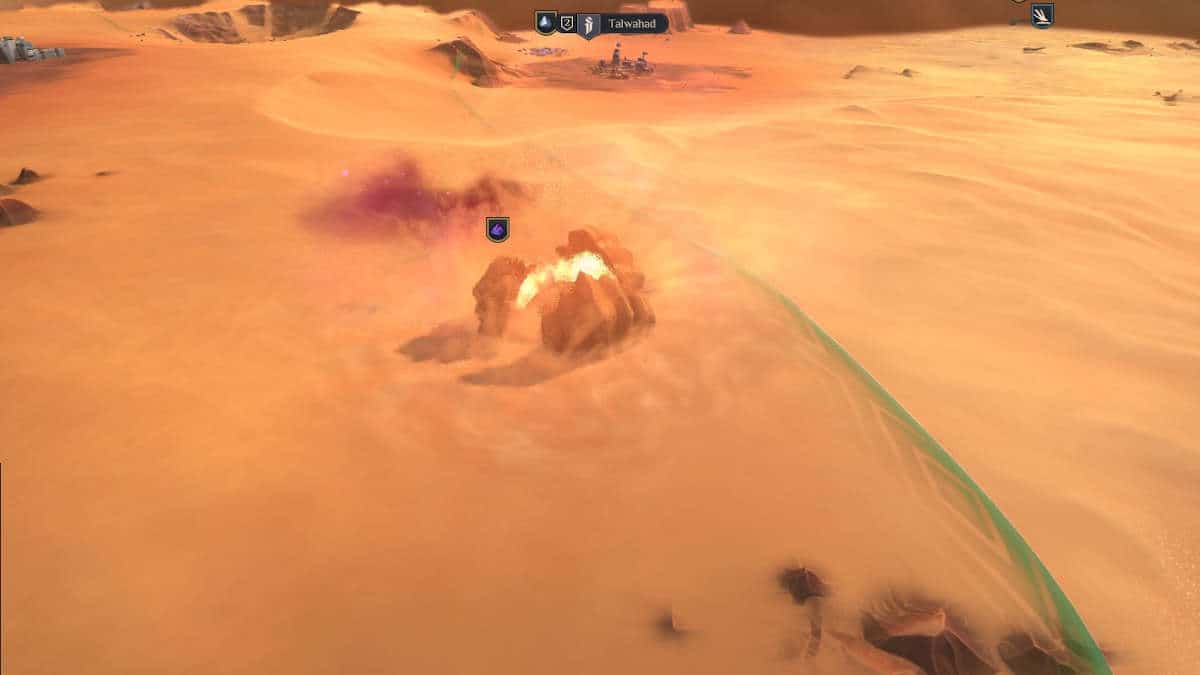
While the game uses lots of general strategies encouraged through typical 4X elements, you will largely experience the gameplay using a pausable real-time strategy. When you start the game, your main mission is to conquer a village that provides spice. You will want to start building units to attack the nearby village while using your scouting Ornithopter to reveal new region resources, villages and other points of interest. The standard RTS build order experience.
One of the other things you need to pay attention to is Sand Worms. These beasts travel through the open sands and appear randomly in areas where the sands are disturbed. It means that large scale armies and battles need to be careful, as do your harvesters on spice fields. One of your requirements in real-time is to stop your armies or harvester from becoming worm food. Unless you can set a trap for an opposing army and let them get eaten instead, or ride them if you’re playing the Fremen.
One other real-time danger to watch for is Sandstorms. These sandstorms can appear anytime, and you need to shelter in the city to avoid them. These things will take down any aircraft, and prevent Harvesters or your units from getting redeployed while they are active over airports or harvesters. Again, you need to react to real-time map effects, which can aid your strategy or catch you by surprise.
Lastly, the combat is done in real-time. Have your units fight whichever unit you want to fight. Some units are more melee orientated, while some ranged my support through a variety of ways. Heavy weapons squads may destroy enemy armor, so your melee units do more damage. Other units may play ambush. It all depends on what you want and how you want to execute your plan in real-time. RTS fans will recognise that here, and those who play Northgard will see the similarities shine through.
Dune Spice Wars Factions Preview
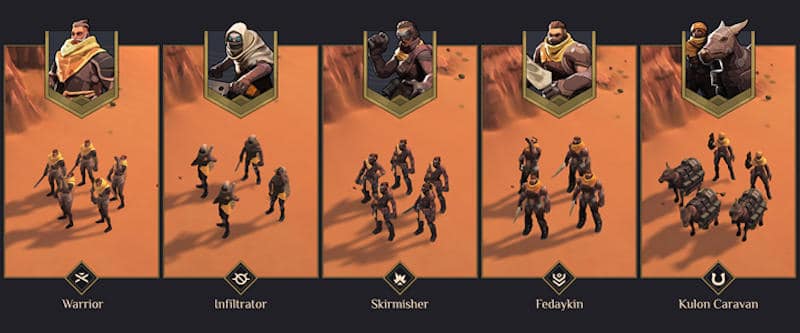
The last major point of the Dune Spice Wars preview is the factions. At the launch of early access, there are four factions:
- Atreides
- Harkonnen
- Fremen
- Smugglers
Each faction has unique mechanics, units and more. For example, the Atreides are more peaceful and diplomatic and have a peaceful annexation offer on neutral villages. Meanwhile, Harkonnen is more military-focused, getting more from raids and oppressions and has ‘better’ military units. Alternatively, the Smugglers play a greater focus on espionage with their hidden underground outposts and economic focus, while the Fremen have better diplomacy with neutrals and play more nomadic with their caravans, invisible units, and the coolest feature, worm riding.
Also, each of the factions gets a slightly different buff each game. When creating a game, you can choose two characters out of four to passively buff you in different ways. This helps you to pick a focus making different parts of a faction’s playstyle feel slightly different on each campaign.
This is the general summary of what you can expect from our Dune Spice Wars preview. For more information, take a look at the game on Steam and keep your eyes peeled on updates as the game goes through early access development.


